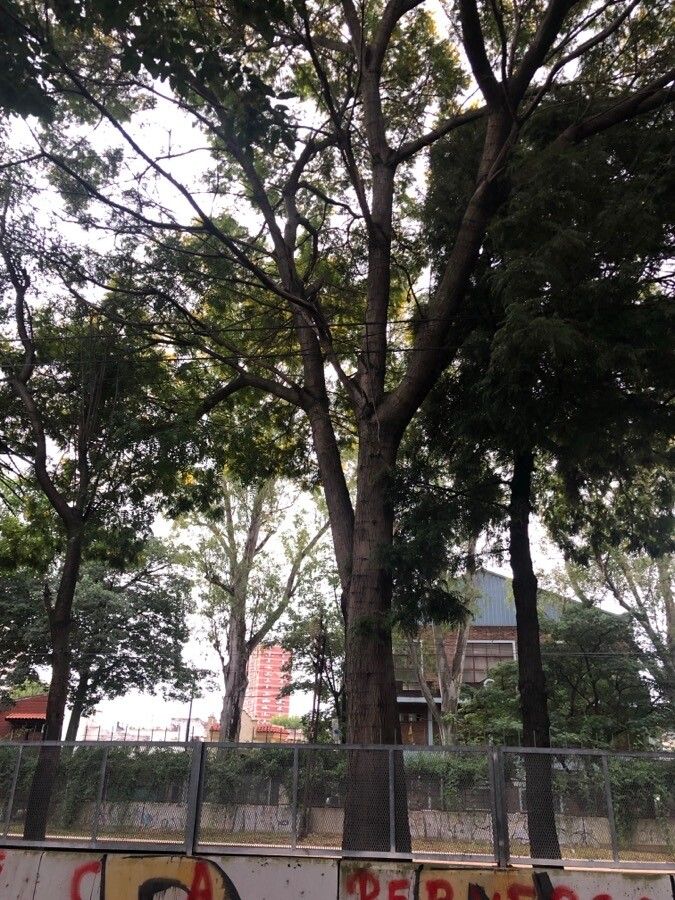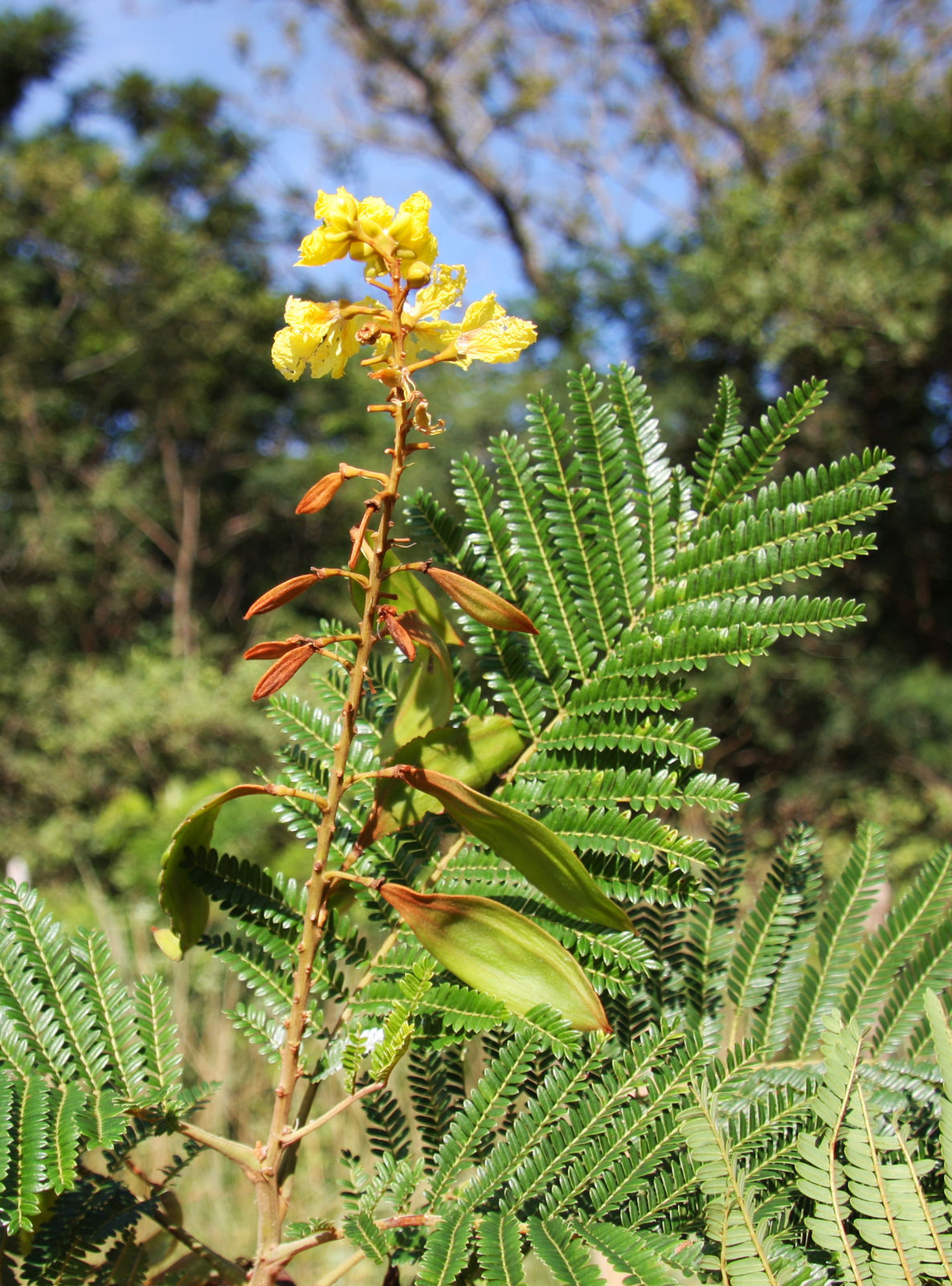Yellow Poinciana, Suinunga
peltophorum dubium
Also known as: ["Yellow Poinciana","Suinunga","Golden Poinciana"]
Overview
A deciduous tree native to South America, known for its vibrant yellow flowers and feathery foliage.
Benefits & Perks
["long-flowering","wildlife attractant (bees, butterflies, birds)","aesthetic foliage"]
Botanical Classification
| Phylum: | Magnoliophyta |
| Class: | Magnoliopsida |
| Order: | Fabales |
| Family: | Fabaceae |
| Genus: | Peltophorum |
| Botanical Name: | Peltophorum dubium |
Plant Characteristics
Basic Information
- Category: Trees
- Suitable Location: outdoor garden in a spacious area with room for growth
- Suitable For:
- Is Weed: No
- Allergenicity: low
Environmental Needs
- Climate: {"temperatureRange":"10–35°C"}
- Hardiness: {"zones":"9–11"}
- Misting: rarely required, only if ambient humidity is very low
- Drainage: Fast-draining to prevent root rot.
- Soil Type: Well-draining, loamy soil with organic matter; can tolerate slightly sandy or clay soils if amended.
Maintenance Level
- Maintenance Level: moderate
- Toughness Level: moderate
- Pruning Frequency: Annually in late winter or early spring before new growth begins.
- Pruning Intensity: Moderate; remove up to one-third of old growth if needed.
Care Details
Ideal Sunlight Coverage:
Full sun (6–8 hours/day); tolerates partial shade but may flower less.
Sunlight Tolerance Tips:
Acclimate gradually if moving from shade to sun; protect from intense midday sun in hot climates; ensure good air circulation to prevent fungal issues.
Care Requirements
Care Difficulty
moderatemoderate
Sunlight
full sun to partial shade
Avoid sudden light changes; use shade cloth if needed; rotate plant for even growth.
Watering
every 7–10 days during active growth, reduce in winter
Water thoroughly but infrequently; ensure good drainage; adjust based on season and weather.
Soil
well-draining, fertile loam with some organic matter
pH: Slightly acidic to neutral (pH 6.0–7.0).
Avoid heavy clay soils; amend with organic matter; ensure pots have drainage holes.
Temperature
Thrives in 65–85°F (18–29°C); tolerates mild frosts but prefers warm conditions.
Protect from frost; avoid placing near drafty windows; monitor for heat stress.
Fertilizing
every 4–6 weeks during spring and summer
Fertilize only when actively growing; flush soil occasionally to prevent salt buildup; use organic options for slow release.
Propagation
Methods
Stem cuttings or seeds; stem cuttings are more common for home growers.
Step-by-Step Propagation Guide
- Take a 4–6 inch cutting.
- Remove lower leaves.
- Dip in rooting hormone.
- Plant in medium.
- Keep moist and warm.
Best Time: Spring or early summer when the plant is actively growing.
Environment
Warm (70–80°F), humid, and bright but indirect light; protect from drafts.
Medium
Well-draining mix of perlite and peat moss or cactus mix.
Hormone
Rooting hormone is recommended to improve success rates.
Timeline
Roots may develop in 4–8 weeks; establishment takes 3–6 months.
Tools Needed
Pruning shears, rooting hormone, small pots, well-draining medium.
Quick Tips
Use healthy, non-flowering stems; maintain consistent moisture; provide bottom heat if possible.
Pruning & Repotting
Pruning Guide
Method
Selective thinning and heading back to maintain structure and promote airflow.
Pruning Plan
Prune to shape the plant, remove dead/diseased wood, and encourage flowering.
Tools
Pruning shears, loppers, gloves, disinfectant.
Checklist
Disinfect tools; prune dead/diseased wood first; make clean cuts; avoid over-pruning.
Repotting Guide
Best Season
Early spring before active growth starts.
Pot Size
One size larger pot (e.g., +2–3 inches in diameter).
Method
Remove plant gently; trim roots if crowded; place in a slightly larger pot with fresh soil; water thoroughly.
Suggestions
Repot every 2–3 years or when roots fill the pot; beneficial for young plants to encourage growth.
Checklist
Check root bound status; prepare new pot with drainage; use fresh soil mix; water after repotting.
Advanced Care Tips
Watering Mastery
Watering Checklist
Check soil moisture; water deeply; ensure drainage; adjust for season.
How to Apply Water Properly
Water at the base of the plant, ensuring moisture reaches the root zone; avoid wetting foliage; allow excess water to drain away.
Watering Schedule Tips
Water deeply once the top inch of soil feels dry; reduce frequency in winter to prevent root rot.
Soil Improvement
Add perlite or coarse sand for drainage; incorporate compost for fertility; ensure good aeration.
Temperature Stress Management
Signs of Temperature Issues
Leaf drop, yellowing, or stunted growth in extreme cold; wilting or scorching in excessive heat.
Cold Stress
Growth slows or halts; may suffer leaf damage or dieback in prolonged cold.
Solution: Provide frost protection; move to a sheltered location; mulch to insulate roots.
Hot Stress
Leaves may scorch, wilt, or drop; growth may slow due to water stress.
Solution: Provide shade during peak heat; increase watering; mist foliage to cool.
Fertilizing Guide
Fertilizing Checklist
Check growth phase; use diluted fertilizer; avoid winter feeding; flush soil periodically.
Fertilizing Method
Use balanced liquid fertilizer diluted to half strength every 4–6 weeks during growing season (spring/summer); avoid fertilizing in winter.
Common Problems & Solutions
Toxicity Warning
Cats
Slightly ToxicCats may experience mild gastrointestinal irritation if they consume parts of Peltophorum dubium. The effects are typically not severe but warrant monitoring.
⚠️ Symptoms:
🌿 Toxic Parts:
⚡ Toxic If:
if eaten
Dogs
Slightly ToxicIngestion of Peltophorum dubium seeds or bark can cause mild gastrointestinal upset in dogs. The toxicity is not life-threatening but may require veterinary attention if symptoms persist.
⚠️ Symptoms:
🌿 Toxic Parts:
⚡ Toxic If:
if eaten
Humans
Slightly ToxicPeltophorum dubium contains compounds that can cause mild gastrointestinal distress when ingested. The toxic effects are generally not severe but can lead to discomfort.
⚠️ Symptoms:
🌿 Toxic Parts:
⚡ Toxic If:
if eaten
Frequently Asked Questions
Q: How tall does Peltophorum dubium grow?
A: It can grow up to 15-20 meters tall in ideal conditions.
Q: Does it require full sun?
A: Yes, it thrives in full sun with well-drained soil.
Q: Is it suitable for cold climates?
A: It prefers warm climates and may not tolerate frost well.
Quick Reference
| Family: | Fabaceae |
| Care: | moderate |
| Light: | full sun to partial shade |
| Water: | every 7–10 days during activ |
Get Expert Care Tips
Download the Plantious app for personalized care reminders and plant identification!
Google Play App Store








